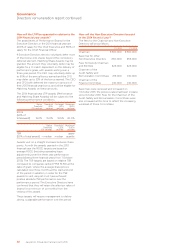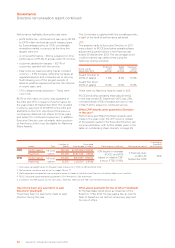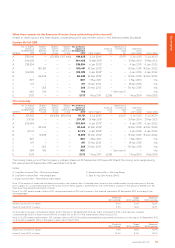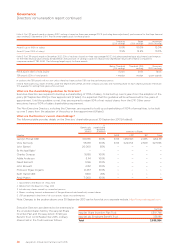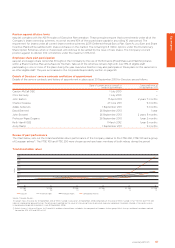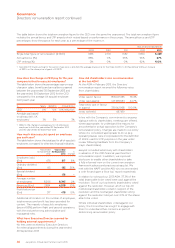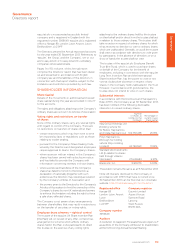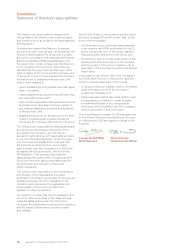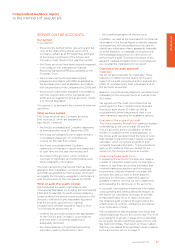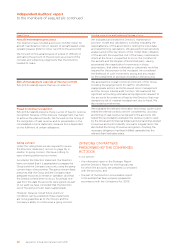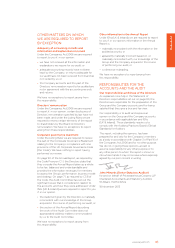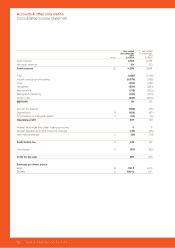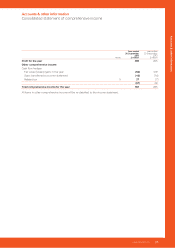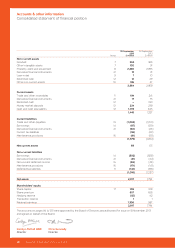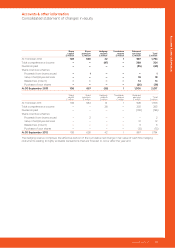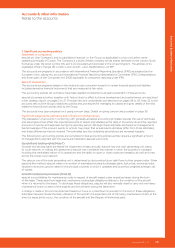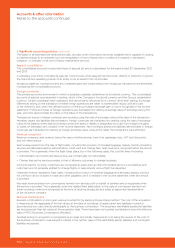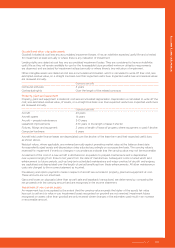EasyJet 2013 Annual Report Download - page 94
Download and view the complete annual report
Please find page 94 of the 2013 EasyJet annual report below. You can navigate through the pages in the report by either clicking on the pages listed below, or by using the keyword search tool below to find specific information within the annual report.
easyJet plc Annual report and accounts 2013
92
Independent Auditors’ report
to the members of easyJet plc continued
Area of focus How the scope of our audit addressed the area of focus
Aircraft maintenance provisions
The Directors have included a provision of £252 million for
aircraft maintenance costs in respect of aircraft leased under
operating leases (refer to notes 1 and 16 to the accounts).
We focused on this area because of a level of difficulty in
estimating the amount of the provision as a result of the
complex and subjective judgements that the Directors
needed to make.
We evaluated and tested the Directors’ maintenance
provision model and calculations, including evaluating the
reasonableness of the assumptions, testing the input data
and reperforming calculations. We also performed sensitivity
analysis around the key drivers of the model: likely utilisation
of the aircraft; the expected cost of the heavy maintenance
check at the time it is expected to occur; the condition of
the aircraft; and the lifespan of life-limited parts. Having
ascertained the magnitude of movements in those
assumptions, that either individually or collectively would be
required for the provision to be misstated, we considered
the likelihood of such movements arising and any impact
on the overall level of provision recorded in the accounts.
Risk of management override of internal controls
ISAs (UK & Ireland) require that we consider this.
We assessed the overall control environment of the Group,
including the arrangements for staff to ‘whistle-blow’
inappropriate actions, and interviewed senior management
and the Group’s internal audit function. We examined the
significant accounting estimates and judgements relevant to
the accounts for evidence of bias by the Directors that may
represent a risk of material misstatement due to fraud. We
also tested journal entries.
Fraud in revenue recognition
ISAs (UK & Ireland) presume there is a risk of fraud in revenue
recognition because of the pressure management may feel
to achieve the planned results. We focused on the timing of
the recognition of seat revenue and its presentation in the
consolidated income statement, because this is dependent
on the fulfilment of certain obligations.
We evaluated the relevant information technology systems and
tested the internal controls over the completeness, accuracy
and timing of seat revenue recognised in the accounts. We
tested the reconciliations between the revenue systems used
by the Group and its financial ledgers and journal entries posted
to revenue accounts to identify unusual or irregular items. We
also tested the timing of revenue recognition, checking the
necessary obligations had been fulfilled, generally that the
relevant flight had taken place.
Going concern
Under the Listing Rules we are required to review
the Directors’ statement, set out on page 36, in
relation to going concern. We have nothing to
report having performed our review.
As noted in the Directors’ statement, the Directors
have concluded that it is appropriate to prepare the
Group’s and the Company’s accounts using the going
concern basis of accounting. The going concern basis
presumes that the Group and the Company have
adequate resources to remain in operation, and that
the Directors intend them to do so, for at least one
year from the date the accounts were signed. As part
of our audit we have concluded that the Directors’
use of the going concern basis is appropriate.
However, because not all future events or
conditions can be predicted, these statements
are not a guarantee as to the Group’s and the
Company’s ability to continue as a going concern.
OPINIONS ON MATTERS
PRESCRIBED BY THE COMPANIES
ACT 2006
In our opinion:
• the information given in the Strategic Report
and the Directors’ Report for the financial year
for which the accounts are prepared is consistent
with the accounts; and
• the part of the Directors’ remuneration report
to be audited has been properly prepared in
accordance with the Companies Act 2006.


